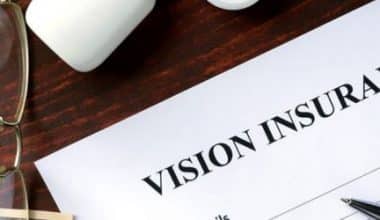Insurance policies are agreements, and insurance endorsements are modifications to the agreement that change the coverage legally specified in the policy. An insurance endorsement, also known as an insurance rider, allows policyholders to alter their insurance at any time during the term of the policy for a fee. It either broadens or narrows the scope of coverage. An existing home insurance policy can be changed or expanded without needing to be replaced or renewed. Insurance endorsements can be used to extend the coverage of a homeowner’s basic policy when it is insufficient
Insurance Endorsement
A change or addition to a contract for insurance that modifies the conditions or purview of the original policy is known as an insurance endorsement. It may be given out at the beginning of your policy’s term, when you buy it, or when you renew it. This contract amendment is enforceable by law.
Standardized forms are used to write insurance policies, which include a list of coverage exclusions as well as the most common risks that policyholders face. Policyholders can request endorsements for their policies if they require additional coverage beyond what is already offered.
Although most insurance endorsements are optional—meaning you or your insurer chose to make the change—they occasionally come with a requirement. The most common reason for mandatory endorsements is that the policy form does not adhere to state law.
An insurance endorsement is a document that details the adjustments to the coverage you and the insurer have decided upon. These changes include:
- Increasing coverage: One frequently requested endorsement for a general liability policy is hired and non-owned auto insurance. It is simple to switch coverage quickly with carriers like Next.
- Identifying additional insureds: An additional insured endorsement broadens the scope of the policy’s existing protection to include individuals who were not initially covered. It is typical for a business contract to include this stipulation.
- Policyholders can request higher or lower coverage limits and sub-limits, which will enable them to better protect their assets.
- Addition of amendatory endorsements that are required by the state: Government-required additions to policies are called state amendatory endorsements. State amendatory endorsements are government-required endorsements added to policies.
How Does It Work
An endorsement is a modification to the policy that can be made at any time without having to renew it. Because of an endorsement, your premiums could change. They are frequently used in property and casualty insurance policies. Riders can also modify their health and life insurance policies. The same terms and conditions that apply to the rest of your policy apply to their renewal, and they are valid until the end of the policy’s term. Only if the endorsement includes a deadline will it be an exception.
If you receive a document stating that it is an endorsement of your policy, compare it to your original declaration page to determine what has changed, or speak with your insurance representative to ensure that you are aware of the implications of the new document.
Common Insurance Endorsements
Any type of policyholder, including those with personal auto, homeowner’s, life, and small business insurance, has the option to add endorsements. Examples of some of the more typical insurance policy endorsements for each category are provided below.
#1. Small Business Insurance
Small business owners can use endorsements to fill insurance gaps such as stop-gap coverage. Some of the following endorsements are standalone policies.
- When a business property is being transported or stored at a location other than the one specified, it is covered under inland marine insurance.
- Equipment breakdown: Covers the cost of repairing or replacing equipment that has been harmed internally.
- Equipment breakdown: Covers the cost of repairing or replacing equipment that has been harmed internally.
- Business interruption insurance: Pays for lost profits and some operational costs if you have to stop operating your business because of a covered claim. A business owner’s policy (BOP) typically includes this coverage.
- Infectious disease: Increases business interruption insurance to cover losses brought on by such illnesses.
- Adds additional parties to the policy’s initial list of named insureds, extending liability protection to them.
- Additional covered property: Modifies a commercial property policy to include areas that were previously not covered.
#2. Life Insurance
Numerous available riders for life insurance affect how and the timing of the policy’s death benefits. Among the most widely used add-ons for life insurance are
- Premium waiver: If the insured person is disabled and unable to work, the required premium payments are waived.
- Monthly payments for long-term care if the insured person needs it.
- Accidental death benefit: Provides a supplemental payment if the insured person is fatally injured.
- Accidental death benefit: Provides a supplemental payment if the insured person is fatally injured.
- Conversion of a term life insurance policy to permanent coverage is possible at specific policy milestones.
How To Get an Insurance Endorsement
If your company has undergone changes or there are coverage gaps, do you think an endorsement could be helpful? An insurance endorsement is simple to obtain, which is good news. To request the changes you need, all you have to do is get in touch with your insurance company.
Additionally, they can give you advice on how an endorsement will affect the price of your insurance. The majority of endorsements are given during the quoting period, but some may be purchased directly from the provider or through an agent. But if you find a coverage hole after getting the policy, get in touch with your agent or the insurer to talk about your options.
The duration of your policy is usually not affected by an endorsement because it becomes a part of the contract. A few endorsements, such as the temporary insurance of a second location, however, change coverage for a specific type.
Getting Insurance Riders: Some Advice
Consider reading over these three suggestions before requesting insurance endorsements or raising your insurance premium.
#1. Be Mindful of Your Risks
A typical insurance policy is made to provide extensive protection in the majority of situations. Is the offered policy adequate for your company? Examine the endorsement and its scope to determine whether it applies to you and whether the added expense is justifiable.
#2. Verify the Coverage of Your Other Policies
The existence of coverage gaps may not be an issue if you have several policies. Some insurers automatically include inland marine coverage in their property policies for individuals who hold certain occupations, such as handymen. If so, you can keep your commercial vehicle without adding a similar endorsement.
#3. Find Out About Deadlines and Requirements
The ability of providers to purchase a policy is constrained. For instance, you cannot buy a standard policy to cover an already-occurred event. Before approving the policy, most life insurance companies require medical examinations. When considering buying an endorsement, be aware of the requirements.
Homeowners Insurance Endorsement
Homeowner’s insurance endorsements are additional options for coverage that policyholders can include to enhance their current homeowner’s policy without having to purchase a different standalone policy. It may be easier for you to choose which endorsements to include if you are aware of the coverage and exclusions in your homeowner’s insurance policy.
While every insurance provider chooses their own set of endorsement options, some are available from numerous carriers. Remember that adding coverage through endorsements usually results in higher homeowner’s insurance premiums. Riders and add-ons are other names for homeowner’s insurance endorsements.
They are supplemental coverage options that are usually chargeable extras. Making them optional enables those who are insured to choose not to purchase the coverage, saving them money, as opposed to having to pay for it.
Insurance endorsements can be used to extend the coverage of a homeowner’s basic policy when it is insufficient. Typical home insurance policy additions include the following.
Scheduled personal property: Homeowner policies have a personal property limit, just like all insurance policies. You can fully insure particular items with this endorsement.
#1. Service Line Coverage
Service line endorsements could assist with financial obligations if your service lines are damaged. Sewer, gas, and water pipes may be covered in addition to phone and power lines. The repair or replacement of these items is frequently not fully covered by many common home insurance policies. Only the service lines that run along the edges of your property are covered by these endorsements; they stop where city property starts.
#2. Home-Based Business
In contrast to the typical exclusions from coverage or extremely low limits offered by homeowners, this endorsement can broaden your coverage. Small home-based businesses that conduct their operations at client locations can benefit greatly from Hiscox.
#3. Identity Theft Coverage
If your wallet is stolen, your standard home insurance policy might pay to replace it, but it probably will not cover the harm caused if the thief uses the information in your wallet to incur debt in your name. Your policy receives a stronger level of financial protection from these kinds of crimes with the addition of identity theft coverage endorsements. Depending on the level of coverage, a post-breach endorsement for identity theft may help with paying for identity recovery and more robust identity theft protection.
#4. Personal Property Replacement Cost Coverage
Although replacement cost coverage is not a standard feature of all home insurance policies, the majority of them do cover personal property. If you purchase this additional personal property insurance, you might be able to pay for the replacement of your personal belongings at their fair market value rather than their depreciated cash value in the event of a covered loss.
#5. Coverage of Sewer Backups and Water Backups
Water damage is a gray area for coverage with providers, so this is an endorsement to consider even though the majority of policies do not cover damages caused by public utilities. These injuries frequently fall into the category of mishaps that can be avoided with routine maintenance, so they are frequently not covered by basic home insurance.
However, there are several reasons why water and sewage backups can occur. Sometimes a combination of city infrastructure and regional weather conditions can cause sewage backups. This endorsement now extends to the majority of losses and costs related to sewer backups.
#6. Earthquake Insurance
Typical homeowner insurance policies frequently do not cover damage from earthquakes. If homeowners do not have earthquake insurance, they might have to pay for any necessary repairs or replacements after an earthquake. You can decide whether you need earthquake insurance by evaluating your risk. Many insurers will let customers add an earthquake endorsement to their policies to cover this risk. Being the state with the highest risk of earthquakes, California frequently needs its earthquake insurance policy.
#7. Valuables Coverage
Theft or damage to property is typically covered by home insurance policies up to a predetermined amount, but that amount is not always sufficient. You may want to think about increasing the coverage limits on expensive items of property, such as jewelry and high-end electronics. A typical policy might only pay for a small portion of the price of these items because of their higher value. The addition of particular items at their full value is possible with a scheduled personal property coverage endorsement.
#8. Ordinance or Law Coverage
If your home needs to be repaired or rebuilt as a result of a covered loss, this coverage will pay for the extra construction costs necessary to satisfy any applicable local building codes. Consider including this endorsement in your home insurance if you reside in an older house or a state with stringent building code requirements.
Some might be exclusive to a small number of specialized insurers, while others are more common. You might think about consulting a certified agent from your insurance provider when looking for insurance coverage to help you get the most out of your upcoming policy.
What Are the Two Types of Endorsement in Insurance?
#1. Standard vs. Non-Standard Endorsements
Standard endorsements are modifications to an insurance policy that are very common and are frequently made by policyholders (e.g., a change of address or the addition of additional coverage for sewer backups). They resemble templates in some ways but for changes to your policy. Non-standard recommendations either modify these “templates” in some way or create something entirely new.
#2. Mandatory Vs. Voluntary Endorsement
Endorsements that are mandatory versus those that are voluntary are relatively uncommon and refer to obligations. This modification to your policy is required by law in your state. These are the most frequent types of voluntary endorsements you will come across; as you might have guessed, they are not required.
What Does It Mean if You Have an Endorsement?
An insurance endorsement, sometimes referred to as a rider, is a modification to your insurance policy that modifies your coverage. In most cases, adding an endorsement to your current insurance policy entails expanding or changing the coverage. It might be referred to as an endorsement, for example, if you decide to purchase optional coverage to increase your insurance coverage.
What Is an Example of an Endorsement?
Scheduled personal property coverage is a typical endorsement that you can purchase as additional coverage for particular types of possessions. A valuable piece of jewelry, such as an engagement ring, or pricey artwork might be covered by an insurance endorsement, for instance.
What Is the Most Common Type of Endorsement?
Scheduled personal property coverage is a typical endorsement that you can purchase as additional coverage for particular types of possessions. Increased coverage limits and risk mitigation for a particular item (typically up to the appraised value) may be provided by a scheduled personal property endorsement.
Conclusion
Insurance endorsements are a way to get additional coverage for your home or place of business because insurance policies do not cover every potential scenario. Examine the coverage provided by typical insurance forms and look for endorsements that address your specific risk requirements. If you own valuable items or have made changes to your home or place of business, an endorsement might be necessary.
To make sure that all of your policies still meet your needs, it is a good idea to review them all once a year. Your agent can help you determine whether you need an endorsement or a different kind of policy, depending on the situation.
Related Articles
- Celebrity Endorsements: Best Practices to get one
- ENDORSE A CHECK: How to Endorse a Check to Someone Hitch-free
- How to Endorse a Check for Mobile Deposit in 2023 (Updated)






